Non-Surgical Blog
Postpartum Back Pain: Find Relief Now
April 25, 2025

- Postpartum back pain is a common condition that many new mothers experience.
- Hormonal changes, physical stress, and lifestyle adjustments can contribute to back pain after childbirth.
- Gentle exercises, proper posture, and body mechanics are crucial for alleviating and preventing postpartum back pain.
- Maintaining a healthy diet, staying hydrated, and getting enough rest are also essential for managing pain and promoting healing.
- Chattanooga Non-Surgical Orthopedics can provide targeted treatment and exercises tailored to address specific back pain concerns.
Introduction
Bringing a new life into the world is an incredible experience, but it can take a toll on a woman’s body. Postpartum back pain is a common issue for many mothers, impacting their daily routines and overall quality of life. The good news is that effective pain relief strategies can help manage and alleviate discomfort, allowing mothers to enjoy those precious moments with their newborns.
Understanding Postpartum Back Pain
Postpartum back pain, especially in the lower back, is a prevalent condition that can persist for months after delivery. This type of pain usually stems from a combination of factors, including hormonal changes, weight gain, and the physical stress of pregnancy and childbirth.
During pregnancy, the body releases hormones like relaxin, which loosens the ligaments in preparation for delivery. While this is essential for a smooth birth, it can also lead to joint instability and pain in the pelvic region, which can extend to the lower back. Additionally, the extra weight carried during pregnancy, combined with changes in posture and body mechanics, puts added stress on the spine, leading to muscle strain and discomfort. In some cases, if not properly addressed, postpartum back pain can become chronic low back pain.
Common Triggers for Postpartum Back Pain
Several factors can trigger or worsen postpartum back pain. Understanding these triggers can empower new mothers to make necessary adjustments and find relief from discomfort. One common trigger is weakened pelvic floor muscles. These muscles play a vital role in supporting the pelvic organs and lower back, and they can become strained during pregnancy and delivery. Weak pelvic floor muscles can lead to pelvic girdle pain, a condition characterized by pain in the lower back, hips, and groin.
Another common trigger is sacroiliac joint pain. The sacroiliac joints connect the sacrum (the triangular bone at the base of the spine) to the ilium (the hip bone). These joints can become misaligned or inflamed during pregnancy and childbirth, leading to pain in the lower back, buttocks, and legs.
Moreover, everyday activities such as breastfeeding, lifting and carrying the baby, and even prolonged standing or sitting can exacerbate back pain. Maintaining proper posture and body mechanics during these activities is crucial for minimizing strain on the back.
Strategies for Alleviating Postpartum Back Pain
Managing postpartum back pain involves embracing a multi-faceted approach that addresses both the symptoms and the underlying causes. A combination of strategies tailored to each woman’s needs can effectively alleviate discomfort and promote healing.
Along with seeking guidance from Chattanooga Non-Surgical Orthopedics for personalized recommendations, incorporating gentle exercises, practicing proper posture, and exploring alternative therapies like massage or acupuncture can contribute to long-term relief and improve the overall quality of life for new mothers.
Effective Exercises for Strengthening Your Back
Engaging in regular physical activity is paramount for strengthening the back and alleviating postpartum discomfort. It is essential to start slowly and gradually increase the intensity and duration of exercises as the body recovers. Gentle exercises that target the back and abdominal muscles can be particularly beneficial.
Pelvic tilts are a great starting point for postpartum back pain relief. This simple exercise involves lying on the back with knees bent and gently tilting the pelvis upward, engaging the abdominal muscles. Other exercises that can help include:
- Bird-dog Pose: This yoga pose strengthens the core and back muscles.
- Modified Plank: Engaging the core muscles in a plank position supports the spine.
- Kegel Exercises: Strengthening the pelvic floor muscles improves bladder control and supports the lower back.
It’s essential to consult with Chattanooga Non-Surgical Orthopedics before starting any new exercise program after childbirth.
Importance of Posture and Body Mechanics
Maintaining good posture is essential for supporting the spine and preventing lower back pain, especially during the postpartum period. When standing, keep the shoulders relaxed and the spine straight, avoiding slouching or hunching over. When sitting, choose a chair that offers good back support and keep the feet flat on the floor. Using a footrest can help if needed.
Proper body mechanics play a crucial role in protecting the back from strain. When lifting the baby or other objects, bend at the knees and keep the back straight. Avoid twisting the back while lifting, and use the leg muscles to power the movement. When breastfeeding, use pillows to support the baby and avoid hunching over.
By being mindful of posture and body mechanics throughout the day, new mothers can minimize the risk of exacerbating back pain and promote a speedier recovery.
Lifestyle Modifications for Managing Back Pain After Childbirth
Making simple yet effective lifestyle modifications can greatly contribute to managing back pain after childbirth. In addition to exercise and maintaining proper posture, focusing on diet and prioritizing rest are key aspects of a holistic approach to recovery.
By making gradual adjustments in daily routines and seeking support from healthcare providers, new mothers can navigate this challenging yet rewarding phase of life while minimizing discomfort and prioritizing their well-being.
The Role of Diet and Hydration
A healthy diet and staying well-hydrated are essential for overall health and can play a crucial role in managing back pain. A balanced diet rich in fruits, vegetables, and whole grains provides the nutrients necessary for tissue repair and healing.
Sufficient hydration is crucial for maintaining the flexibility and health of spinal discs, which act as cushions between the vertebrae. Dehydration can make these discs more prone to injury and can exacerbate pain. Aim to drink plenty of water throughout the day.
Addressing nutritional deficiencies, particularly calcium and vitamin D, is important for bone health and can contribute to reducing the risk of chronic back pain. Consult with a healthcare provider or a registered dietitian to determine if any dietary changes or supplements are necessary.
Balancing Rest and Activity
Rest is essential for the body’s healing processes, especially during the postpartum period. While it may seem challenging for new mothers to find time to rest, incorporating short periods of relaxation throughout the day can make a significant difference in overall health and well-being.
Alternating between periods of rest and physical activity is key. While gentle exercise is crucial, overexertion can delay healing and exacerbate pain. Listen to the body’s cues and rest when needed. Create a relaxing sleep environment and aim for 7-8 hours of quality sleep per night if possible. Short naps during the day can also help restore energy levels and promote healing.
Balancing rest and activity ensures that new mothers provide their bodies with the opportunity to recover and rebuild while still engaging in activities that support their physical and emotional well-being.
Benefits of Physical Therapy
Physical therapy is a highly effective treatment option for postpartum back pain, offering targeted exercises, manual therapy, and guidance tailored to individual needs. Physical therapists can assess posture, muscle imbalances, and movement patterns to identify the underlying causes of pain.
They can then create a customized treatment plan that may include exercises to strengthen core muscles, improve flexibility, and alleviate pain. Specifically, physical therapists can address issues like diastasis recti, which according to research by Mogren IM can contribute to long term backache and pelvic pain.
| Benefit of Physical Therapy | Description |
| Pain Relief | Reduces pain through manual therapy, exercises, and modalities like heat or ice. |
| Improved Strength and Flexibility | Strengthens weakened muscles and improves flexibility in the back, core, and pelvis. |
| Posture Correction | Addresses postural imbalances that contribute to back pain. |
| Personalized Care | Provides individualized treatment plans based on specific needs and goals. |
| Long-Term Prevention | Equips individuals with strategies to prevent future back pain episodes. |
Conclusion
Postpartum back pain is a common concern for many new mothers. Understanding the triggers and implementing effective strategies can help alleviate discomfort. By incorporating strengthening exercises, focusing on posture, making lifestyle modifications, and considering physical therapy, you can manage and reduce postpartum back pain. Remember, each body is unique, so it’s essential to consult with Chattanooga Non-Surgical Orthopedics to tailor a plan that suits your specific needs.
If you are looking for pain relief, don’t hesitate to get in touch with our experts for support in finding relief now.
Frequently Asked Questions
How long should I expect postpartum back pain to last?
Postpartum back pain usually improves within a few months after the birth of your baby as your body recovers from the hormonal changes and physical changes of pregnancy. However, for some women, persistent low back pain can linger, leading to long term backache.
Can certain activities worsen postpartum back pain?
Yes, heavy lifting, long periods of time spent sitting or standing with poor posture, and activities that strain the back and pelvic region can worsen postpartum back pain. Exploring alternative treatments like physical therapy can be beneficial in such cases.

Search our blog posts: